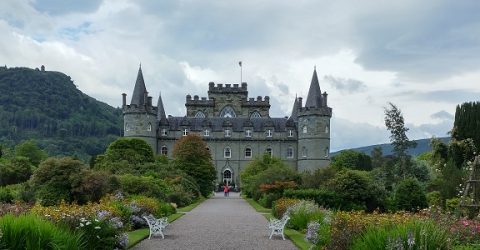The UK regions with the slowest average broadband speeds revealed
The slowest average broadband speeds tend to be found in rural regions, and these connections impose tangible disadvantages in today’s online society

If you live in a modern urban apartment building with a ribbon of fresh black tarmac bisecting the pavement outside, you probably enjoy impressively fast broadband.
You may even have a choice of providers, as urban areas have historically been prioritised by ISP and infrastructure firms as more cost-effective to invest in given their population density.
By contrast, if you live in a property with hills visible above the roof and a garden long enough to drive down, your connectivity is likely to be far slower.
The higher per-property cost of bringing rapid internet connectivity to rural areas has resulted in an imbalance between densely populated and sparsely populated parts of the UK.
And a recent study based on research conducted in the House of Commons Library has revealed Wales, Scotland and south-west England have the slowest average broadband speeds.
That may not be surprising, but it’s interesting all the same.
HelpWhich is the fastest broadband in my area?
The MP who commissioned the research, Layla Moran of the Lib Dems, has even identified which constituencies are worst off.
If yours is on the list, the information superhighway is likely to remain frustratingly elusive for some time…
Go west
You won’t find any London boroughs or inner-city areas on the list of the Westminster constituencies with the slowest average broadband speeds in the UK.
Instead, you’ll find North Cornwall propping up the league table, recording a dismal average download speed of just 29.1Mbps.
Neighbouring St Ives had the second-worst average connection speeds at 30.5Mbps, while ten miles east, Camborne and Redruth came third with 30.9Mbps.
Other south-western constituencies struggling with below-par connectivity are Tiverton and Honiton (31.9), Truro and Falmouth (32.1) and St Austell and Newquay (33.1).
Celtic connections
Unsurprisingly, a fifth of the top 100 constituencies were in Scotland, and it’s equally unsurprising the island communities of Orkney and Shetland were ranked slowest at 31.1Mbps.
The west coast constituency of Ross, Skye and Lochaber was barely faster at 31.4Mbps, despite being almost entirely on the mainland or connected via a road bridge.
More unexpected is the presence of Dumfriesshire, Clydesdale and Tweeddale at number 18 on the list. Dumfries and Galloway is just six places away with speeds of 34.3Mbps.
This is comparable to the affluent East Lothian (34.1), Argyll & Bute (34.3) and Gordon (34.5) constituencies.
Enter the dragon (very slowly)
Considering it only contains 40 Westminster constituencies compared to 59 in Scotland, it’s perhaps surprising that Wales had the same number of entries in the ‘top’ 100.
Prominent offenders included the Gwent constituencies of Monmouth and Blaenau Gwent (28th and 32nd slowest respectively).
Yet even this pales into insignificance compared to Brecon and Radnorshire, which has the UK’s fourth-slowest broadband at just 31Mbps.
Ceredigion only managed an extra 0.5Mbps over Brecon’s dismal figure, while Montgomeryshire just missed out on the top ten by returning average speeds of 32.2Mbps.






